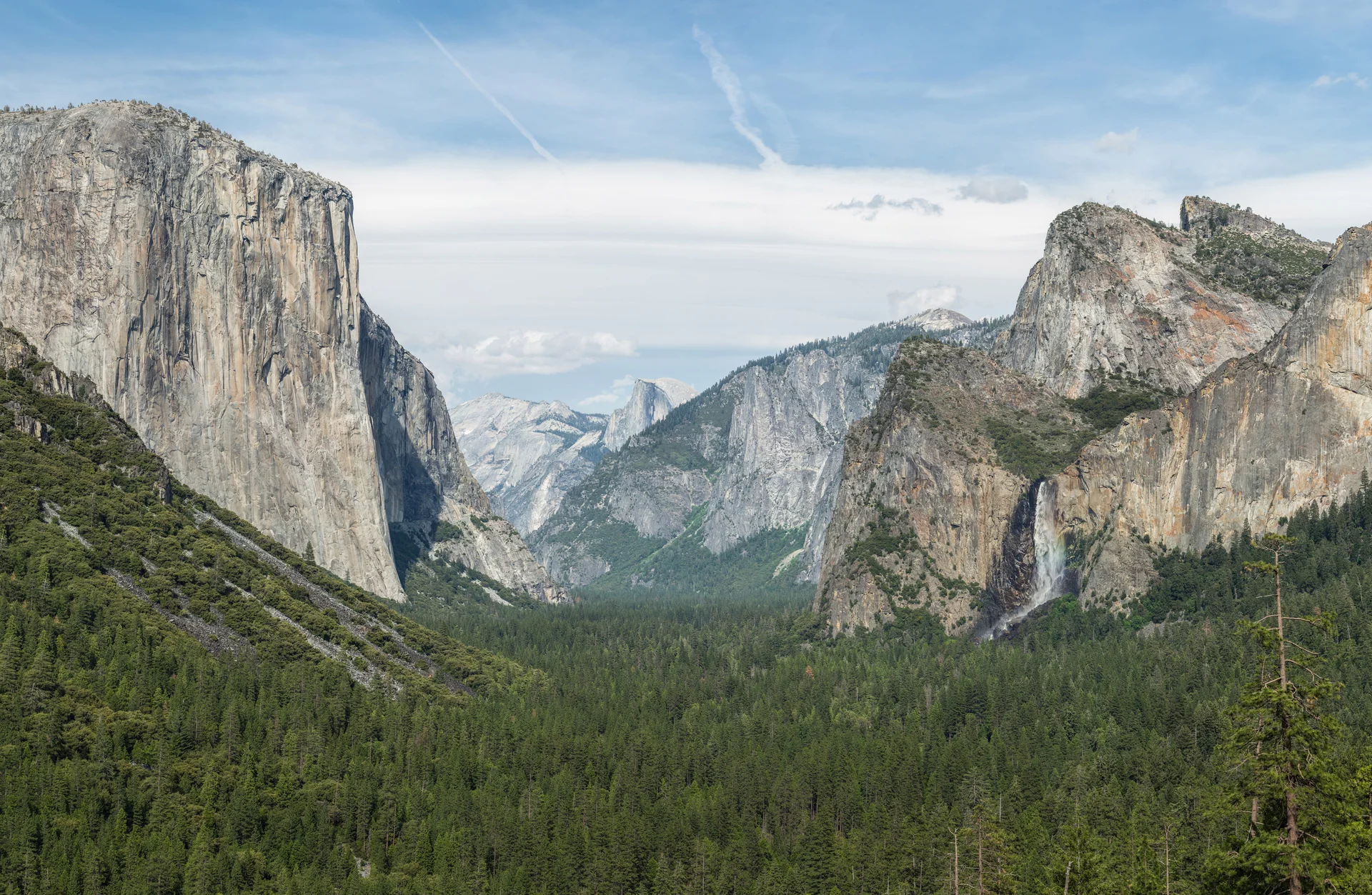
Yosemite's Granite Giants and Cascading Sierra Nevada Waterfalls
Experience Nature's Masterpiece in California's High Country
About This Site
Yosemite National Park showcases some of Earth's most spectacular examples of glacial valley formation, featuring towering granite monoliths like Half Dome and El Capitan, thundering waterfalls including one of North America's tallest cascades, and ancient giant sequoias that can live over 3,000 years. This iconic UNESCO World Heritage site represents the pinnacle of natural beauty where millions of years of geological processes created breathtaking landscapes through massive glacial carving. The park's remarkable biodiversity includes over 400 animal species and 1,600 plant species, whilst its dramatic elevation range from 600 to 4,000 metres creates diverse ecological zones that continue inspiring visitors with unparalleled wilderness experiences in California's majestic Sierra Nevada range.
Why It Matters
Yosemite represents one of the world's most spectacular examples of glacial valley formation, demonstrating exceptional natural beauty and outstanding geological processes shaped by millions of years of glaciation, featuring iconic granite monoliths and diverse ecosystems. The park showcases how massive ice age glaciers carved dramatic valleys.
Natural Wonders and Geological Marvels
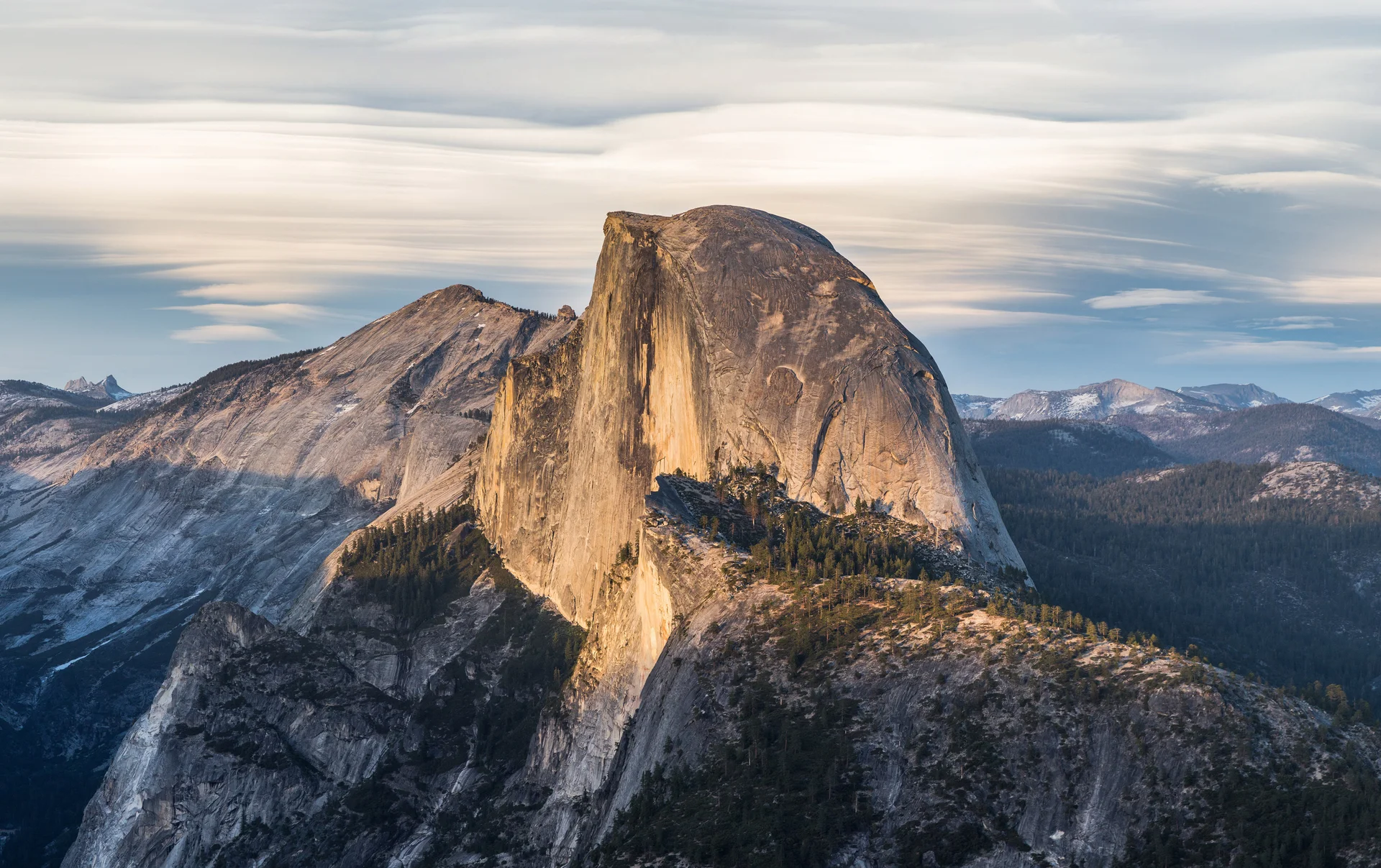
Half Dome and El Capitan Granite Giants
These legendary granite monoliths represent Yosemite's geological pinnacle, formed from ancient magma chambers that cooled deep underground before glacial erosion over millions of years exposed and sculpted them. Half Dome, standing majestically at 2,682 metres above sea level, showcases the dramatic effects of glacial carving and granite exfoliation processes that created its distinctive shape. El Capitan, a massive granite cliff face rising over 900 metres from the valley floor, demonstrates the Sierra Nevada batholith's formation and provides world-class rock climbing challenges. These formations offer outstanding examples of how glacial erosion shaped granitic bedrock into unique geological features that define Yosemite's extraordinary landscape.
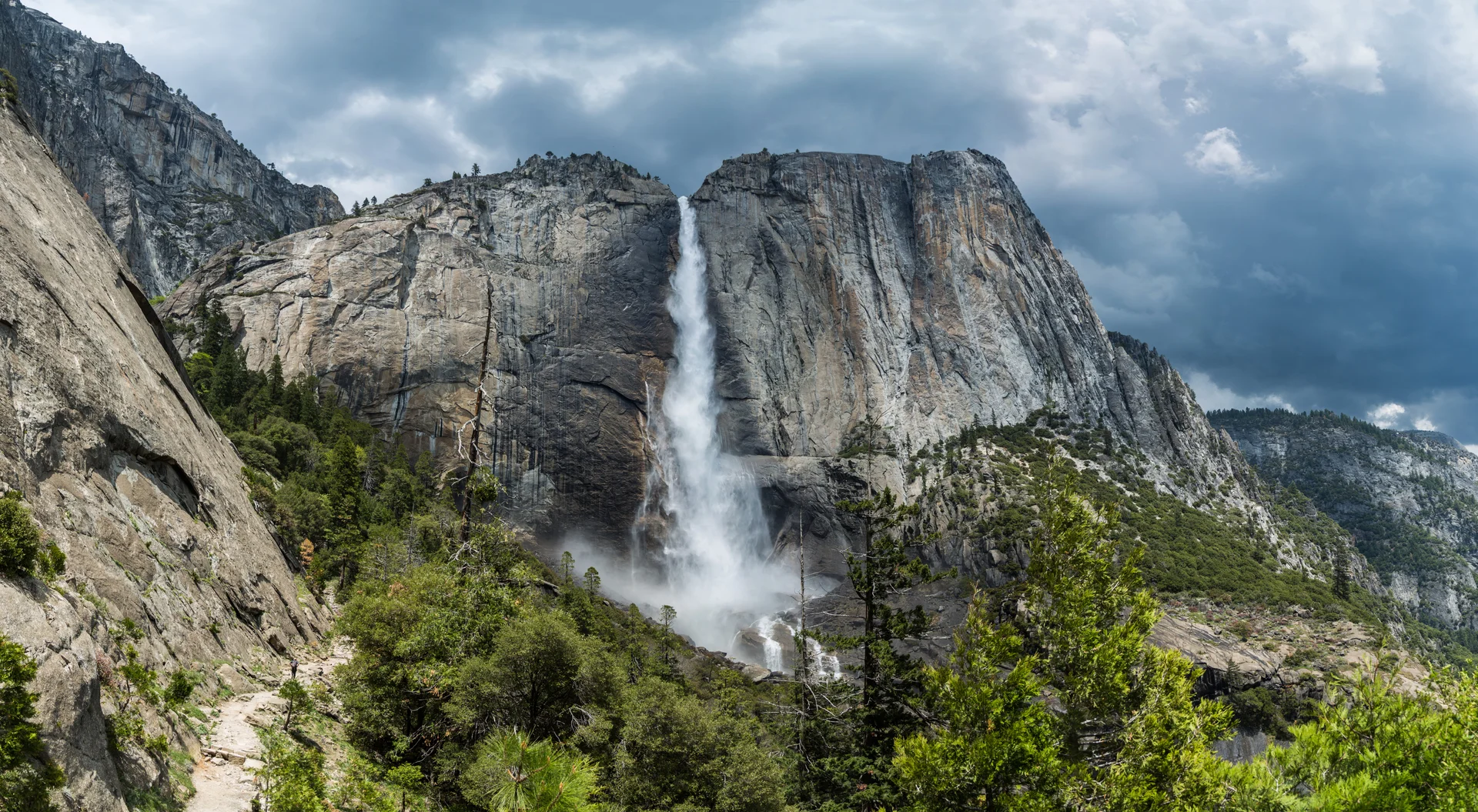
Magnificent Waterfall Cascades
Yosemite's spectacular waterfall systems showcase the park's unique glacial topography in breathtaking displays of natural power and beauty. Yosemite Falls, one of North America's tallest waterfalls at 739 metres, cascades in three magnificent tiers during peak spring snowmelt, creating thunderous displays visible throughout the valley. Bridalveil Fall flows gracefully year-round at 188 metres, greeting visitors with misty veils that dance in the afternoon breeze. The famous Vernal Fall and Nevada Fall demonstrate the hanging valley phenomenon where tributary streams carved by smaller glaciers plunge dramatically to meet the main valley floor carved by the massive Tuolumne Glacier. These waterfalls exemplify the geological processes that shaped Yosemite's landscape through millions of years of glacial activity and seasonal water flow.
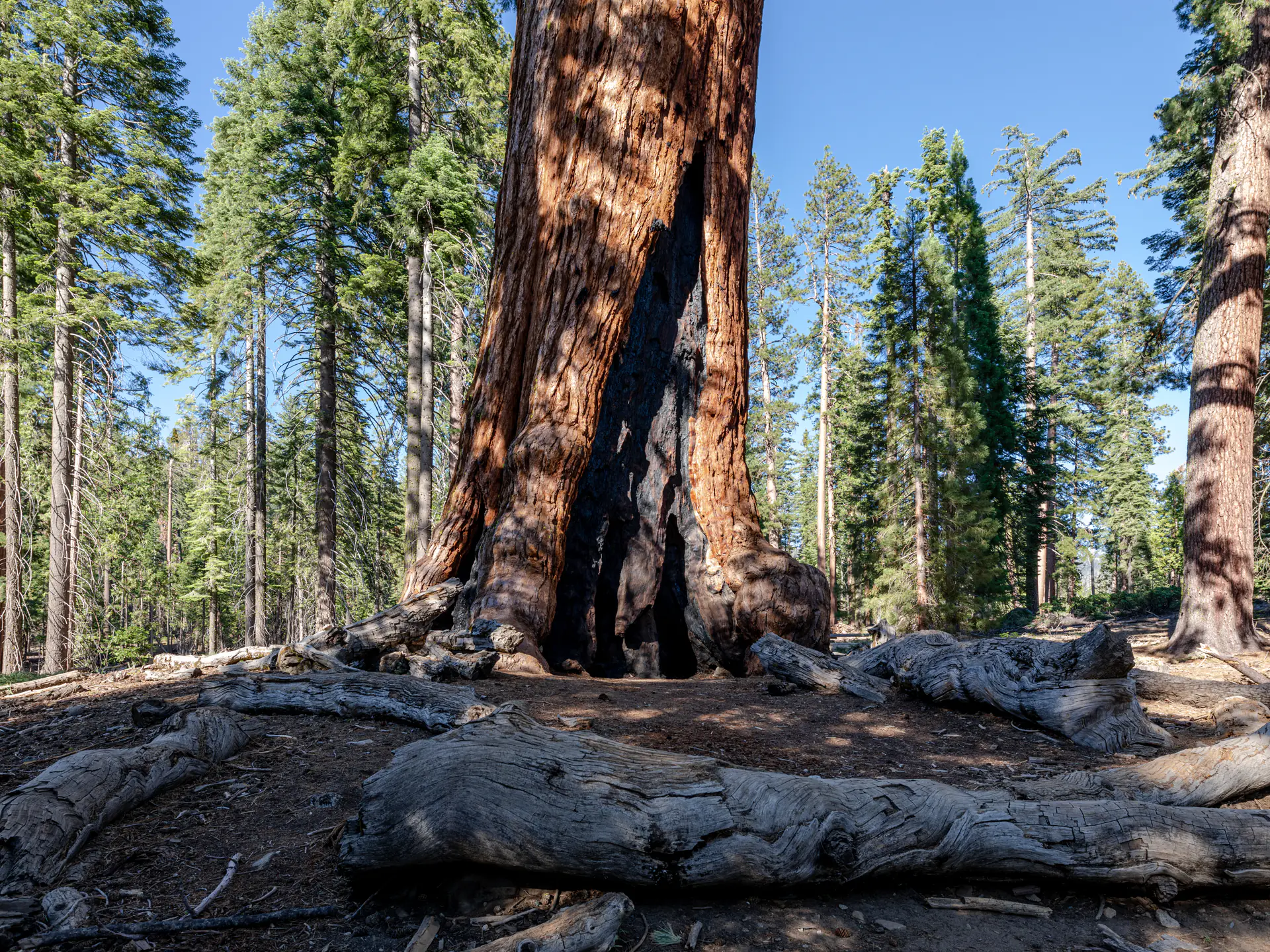
Majestic Giant Sequoia Groves
Mariposa Grove represents one of Earth's most remarkable examples of longevity and natural adaptation, housing over 500 mature giant sequoias (Sequoiadendron giganteum) including the legendary Grizzly Giant, estimated at nearly 3,000 years old and ranking among the world's 30 largest trees by volume. These ancient giants have survived ice ages, droughts, and countless wildfires through their massive size, thick fire-resistant bark, and remarkable adaptability. The grove underwent extensive restoration from 2015-2018 to protect delicate root systems and restore natural water flows, demonstrating cutting-edge conservation efforts to preserve these irreplaceable living monuments. Walking among these towering ancients provides profound connections to deep time and the continuity of life on Earth.
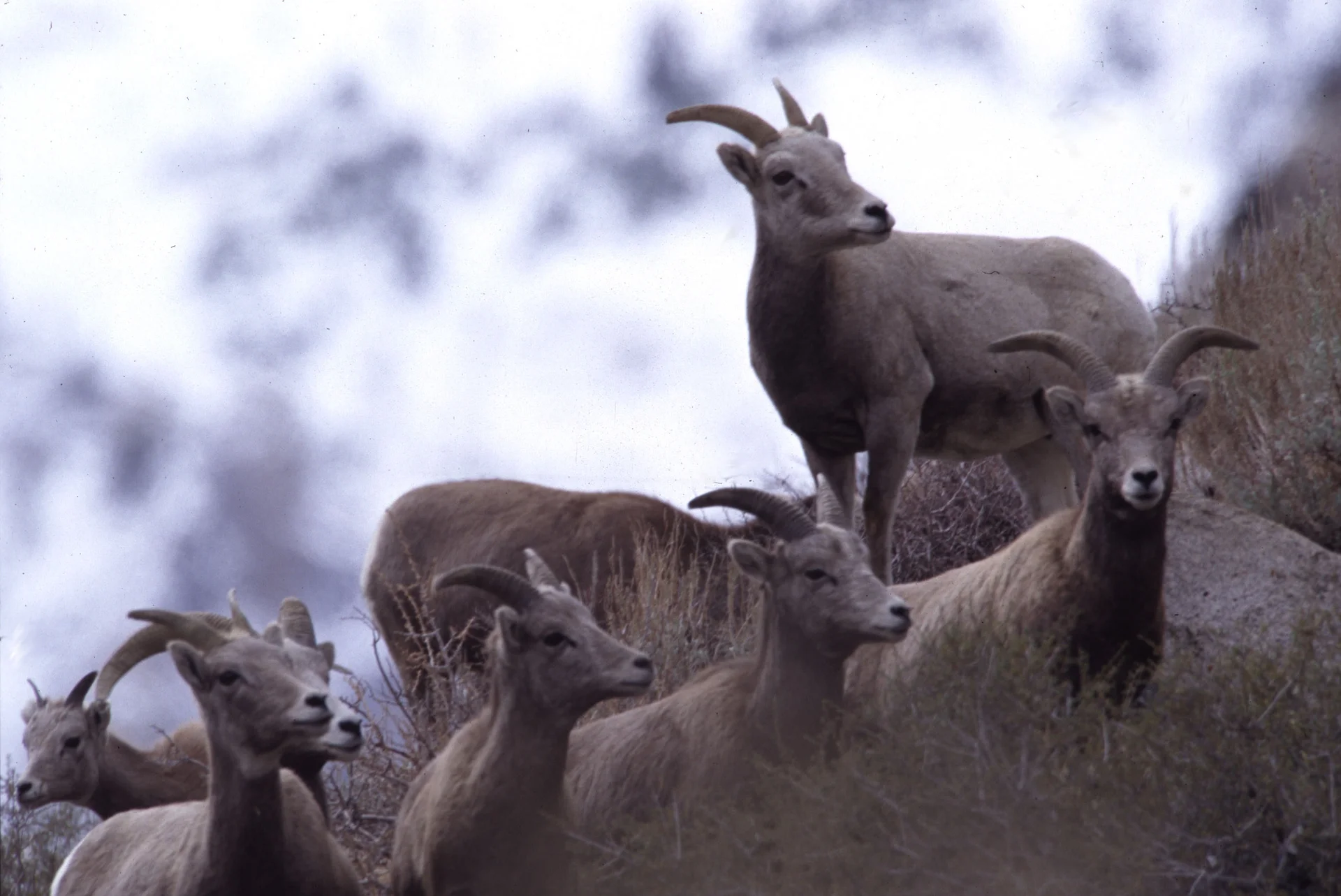
Diverse Alpine Ecosystems and Wildlife
Spanning from 600 to 4,000 metres in elevation, Yosemite encompasses extraordinary biodiversity across multiple distinct life zones, from foothill chaparral and oak woodlands to pristine alpine meadows and ancient coniferous forests. The park supports over 400 animal species, including approximately 300-500 American black bears, elusive mountain lions, and the remarkable conservation success story of Sierra Nevada bighorn sheep—an endangered subspecies whose population has faced recent challenges, declining from a peak of 600 in 2015 to approximately 350 individuals currently, highlighting ongoing conservation needs. This diverse ecosystem demonstrates ongoing ecological processes in pristine mountain environments, offering visitors opportunities to witness successful species recovery efforts and understand complex mountain ecosystem relationships that have evolved over millions of years.
Location & Planning
Access via Highway 120 (west), 140, or 41. Entry permits required May-September; book weeks ahead. Reserve accommodation 366 days in advance. Free valley shuttle operates year-round.
Loading map...
Frequently Asked Questions
Yosemite National Park showcases spectacular glacial valley formation featuring iconic granite monoliths like Half Dome and El Capitan, powerful waterfalls including one of North America's tallest cascades, and diverse ecosystems. UNESCO recognised its outstanding geological processes in 1984.
These granite monoliths formed from ancient magma chambers that cooled deep underground millions of years ago. Glacial erosion over repeated ice ages carved and sculpted the granite into today's dramatic cliffs and domes, with processes like exfoliation creating Half Dome's distinctive shape.
Drive Highway 120 or 140 from San Francisco (4-5 hours). Entry permits required May-September; book recreation.gov weeks ahead. Organised tours available from San Francisco. Peak season accommodation books 366 days in advance. Free valley shuttle operates year-round.
Late spring through early summer (May-July) offers peak waterfall flows from Sierra Nevada snowmelt. Yosemite Falls reaches maximum volume in May-June, creating spectacular three-tier cascades. Some waterfalls may reduce to trickles by late summer months.
Entry permits required May-September; book recreation.gov weeks ahead. Half Dome climbing requires advance permits through lottery system. Wilderness permits needed for backcountry camping. Book accommodation 366 days in advance for peak season due to high demand.
Wear sturdy hiking boots, bring layers for variable weather, sun protection, and abundant water. Bear-proof food storage containers required for campgrounds. Pack binoculars for wildlife viewing. Maintain safe distances from all wildlife, especially 300-500 black bears in park.
Mariposa Grove contains over 500 mature giant sequoias, including the famous Grizzly Giant estimated at nearly 3,000 years old and ranking among the world's 30 largest trees. These ancient giants survived ice ages through their massive size and fire-resistant bark.
UNESCO World Heritage Criteria
Inscribed in 1984, this site meets 2 of UNESCO's 10 criteria for Outstanding Universal Value
Criterion (vii): Contains superlative natural phenomena
Yosemite contains superlative natural phenomena through iconic granite monoliths including Half Dome rising 2,682 metres and El Capitan's 900-metre vertical cliff face, spectacular waterfalls featuring one of North America's tallest cascades at 739 metres, and ancient giant sequoias living over 3,000 years creating breathtaking wilderness landscapes.
Criterion (viii): Outstanding geological processes
The park represents an outstanding example of glacial valley formation demonstrating how massive ice age glaciers carved U-shaped valleys through Sierra Nevada granite batholith, whilst exposing exceptional geological features including exfoliation domes, hanging valleys, and polished bedrock that reveal fundamental processes governing mountain landscape evolution over millions of years.
Historical Context
Indigenous Ahwahneechee Heritage (4,000+ years)
The Ahwahneechee people called Yosemite Valley "Ahwahnee" and lived sustainably in this landscape for millennia, developing sophisticated land management practices including controlled burning that maintained meadow ecosystems. Their sustainable practices shaped the valley's natural environment long before European contact.
Euro-American Discovery and Settlement (1851-1906)
The Mariposa Battalion entered Yosemite Valley in 1851, leading to forced displacement of indigenous peoples. Photography by Carleton Watkins and advocacy by John Muir promoted conservation awareness and tourism development. This period saw the valley transformed into a protected scenic destination.
National Park Establishment (1890-1916)
Yosemite became one of America's first national parks in 1890, with the National Park Service taking management in 1916, establishing principles of preservation for public enjoyment and scientific study. This landmark designation helped establish the national park concept worldwide.
Modern Conservation Era (1984-present)
UNESCO World Heritage designation in 1984 recognised Yosemite's outstanding universal value, leading to enhanced international protection and advanced conservation programmes for ecosystems and geological features. Modern management balances preservation with sustainable tourism through innovative visitor programmes and ecological research.
Conservation & Protection
Current Conservation Status
Protected as a U.S. National Park with comprehensive UNESCO World Heritage oversight, balancing wilderness preservation with sustainable visitor access through advanced ecosystem management and restoration programmes.
Conservation Challenges
- Climate change impacts including altered precipitation patterns affecting waterfall flows and ecosystem distributions
- Increasing visitor pressure requiring careful crowd management to protect fragile meadow and granite environments
- Air pollution from California's Central Valley affecting visibility and ecosystem health in protected wilderness areas
- Wildfire management balancing natural fire cycles with visitor safety and infrastructure protection
Active Conservation Efforts
- Comprehensive ecosystem restoration programmes including Mariposa Grove sequoia habitat enhancement and meadow rehabilitation projects
- Intensive wildlife conservation programmes working to stabilise endangered Sierra Nevada bighorn sheep populations, whose numbers have experienced fluctuations requiring continued habitat management and breeding support
- Sustainable tourism programmes including shuttle systems, timed entry reservations, and Leave No Trace education reducing environmental impact
- Cutting-edge research partnerships with universities advancing understanding of climate change adaptation and glacial landscape conservation
Image & Content Attribution
Research & Content Sources
Photography & Visual Media
Last updated: 11 October 2025